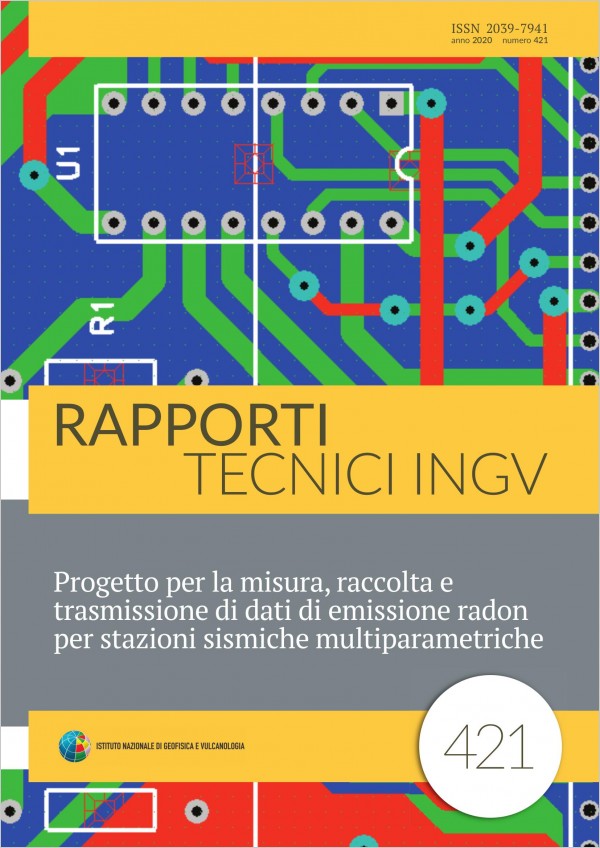Progetto per la misura, raccolta e trasmissione di dati di emissione radon per stazioni sismiche multiparametriche
Main Article Content
Abstract
The seismic monitoring of the national territory and of the EuroMediterranean area makes use of the velocimetric, accelerometric and GPS (geodetic) data acquired by the stations of the National Seismic Network, by the RING Network and by the MedNet Network. As part of the FISR 2017 project “Integrated operating rooms and monitoring networks for the future: INGV 2.0” (2017), sensors capable of detecting both geophysical and geochemical parameters at the same time are being integrated. This technical report describes the integration of a Rn222 sensor (radon hereafter). Over the past few decades radon has found a variety of Earth Science applications, ranging from its use as a potential earthquake precursor and tectonic stress indicator to its specific role in volcanic environments, where significant changes in concentration previous or concomitant to eruptive crises are also induced by volcanic gases, CO2 for example, which act as carriers accelerating the migration of radon through the earth’s crust and therefore its detection. In order to explore the possibility of a link between seismogenic processes and temporal variability of radon emissions, a permanent national network has been created, IRON (Italian Radon mOnitoring Network), which uses both commercial radon instruments, equipped with a proprietary system for data storage, transmission and consultation, and INGV sensors that need an interface to acquire and make data available remotely. A hardware and software interface has therefore been designed, built and tested capable of i) counting and storing the pulses in TTL format generated by the instrument which measures the radon concentration in air, ii) being connected to a router for sending the acquired data to a server. A service (syncproc) was also created in PHP to query remote stations at regular intervals and collect the acquired data intended to populate a database created with MariaDB. An expressly created website allows to extract the stored data from the database and configure each installed sensor. The various software elements have been designed using open source resources.
Article Details
Section
Article

This work is licensed under a Creative Commons Attribution 4.0 International License.

